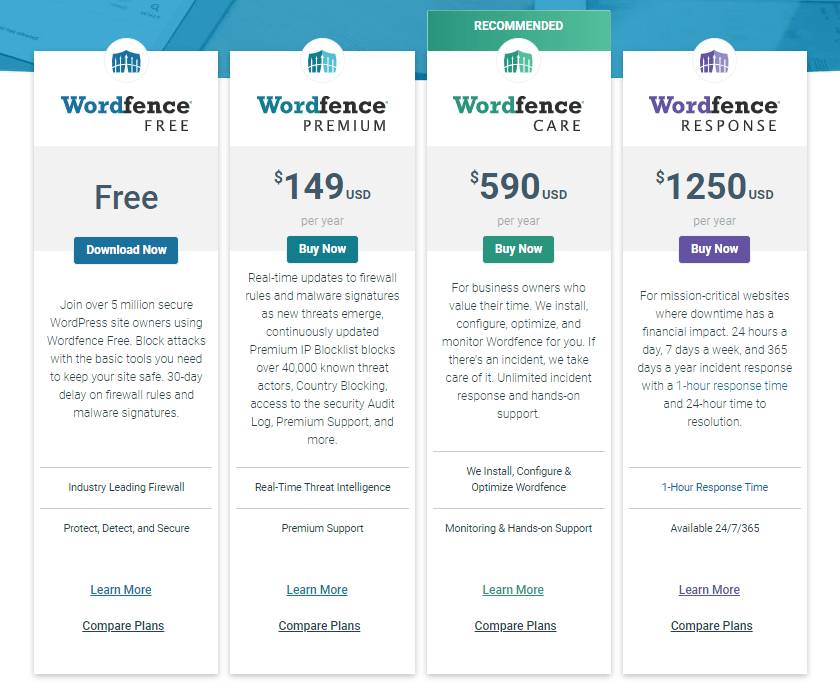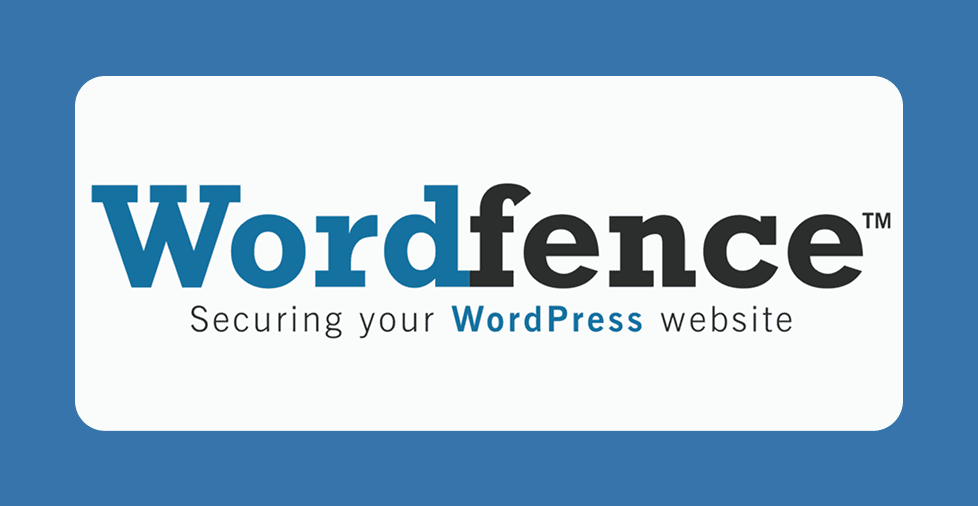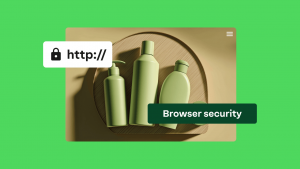Key takeaways:
- It’s important to secure your WordPress site to prevent hacking, data breaches, and loss of visitor confidence.
- Take advantage of Wordfence’s robust features, such as firewall protection, malware scanning, and real-time threat defense to safeguard your website from emerging cyber threats.
- Observe best practices like regular updates, quick responses to alerts, and using Wordfence Central to ensure strong and continuous security for your WordPress site.
Website security is important for every site, regardless of where it’s hosted. With WordPress powering over 43.7% of the web according to WPZoom, implementing robust security measures becomes even more important as this massive share makes WordPress sites targets for cybercriminals.
This is where Wordfence comes in: it helps keep your WordPress site safe and sound from cyber threats. It has features like a firewall, malware scanner, and real-time traffic monitoring, which protect your site from threats. Whether you’re just starting out or have been running a site for years, Wordfence gives you peace of mind by ensuring your website remains secure and operates smoothly.
What is Wordfence?
Wordfence is a comprehensive security plugin for WordPress that guards your website from cyber threats. It keeps an eye out for threats like malware, brute-force login attempts, and distributed denial of service (DDoS) attacks and blocks them before they can do any harm to your website.
Why choose Wordfence for WordPress security?
To better understand Wordfence’s strengths, see how it compares to other prominent WordPress security plugins:
| Feature | Wordfence Security | Sucuri Security | SolidWP (formerly iThemes Security) | Security Optimizer (formerly SiteGround Security) |
| Firewall type | Endpoint web application firewall (WAF) (on-server, deeply integrated) | Cloud-based WAF (off-site, filters traffic remotely) | Limited/Configuration-based, no dedicated WAF as robust as Wordfence’s | Basic, primarily host-level hardening |
| Malware scanner | Deep, server-side scanner (core, themes, plugins) | Remote and server-side, also checks blacklists | Focuses on core file changes, themes, plugins, and known vulnerabilities | Basic, integrated with host-level scans |
| Brute force protection | Excellent, actively blocks repeated login attempts | Strong, part of their WAF and hardening | Strong, limits attempts, 2FA, password requirements | Good, focuses on login hardening |
| DDoS mitigation | Helps mitigate by blocking malicious bots | Strong (cloud-based WAF offers better mitigation) | Not mentioned | Not mentioned |
| Free version | With firewall, scanner, and 2FA | No free version | No free version | No free version |
| Ease of use | User-friendly dashboard, clear alerts | Generally straightforward, more technical for WAF setup | Good | Very user-friendly, simple toggles |
| Performance impact | Can be moderate on shared hosting/larger sites during scans (can be set if you want to use low resource scanning or manually limit the scan options). | Generally low (cloud-based) | Low | Low |
| Real-time threat intelligence | Yes (Premium) | Yes | Limited (focus on known vulnerabilities) | Not mentioned |
| Malware cleanup | Yes, for select paid plans; For the Free version, signatures are delayed for 30 days | Yes, unlimited | Manual, some basic clean-up tools | Not mentioned |
Key benefits of Wordfence over competitors:
- Comprehensive on-server protection. Wordfence’s endpoint WAF operates directly on your WordPress server, blocking threats like Structured Query Language (SQL) injection and cross-site scripting (XSS). Paired with a malware scanner that checks core files, themes, and plugins, it offers robust protection not matched by many other plugins.
- User-friendly interface. Despite its advanced features, Wordfence is easy to set up and navigate, with color-coded alerts and actionable recommendations. The “Learning Mode” adapts the firewall to your site’s traffic, minimizing false positives.
- Powerful free version and flexible pricing. The free version offers a complete firewall, malware scanner, brute-force protection, and 2FA. Premium plans provide advanced features like real-time updates, country blocking, and priority support, allowing scalability as needs grow.
- Dedicated security research and real-time updates. Backed by a team of security experts, Wordfence delivers real-time threat intelligence and regular updates to firewall rules and malware signatures, ensuring protection against the latest threats.
Core features of Wordfence security
These core features work together to provide robust security without sacrificing performance. Here’s a look at some of Wordfence’s key features:
- Web Application Firewall (WAF)
- Malware scanner
- Login security
- Live traffic monitoring
- Blocking and rate limiting
Web Application Firewall (WAF)
The Web Application Firewall (WAF) is one of Wordfence’s notable features. It blocks malicious traffic before it even reaches your website. By analyzing incoming requests, it can identify and stop threats like SQL injection, XSS, and other common attack types.
Malware scanner
The malware scanner scans your core files, themes, and plugins for any signs of malware. It also checks for compromised files that may have been altered by hackers. With scheduled scans, you can automate regular checks and ensure that your site stays clean without manual intervention.
Login security
Wordfence’s login security features provide an extra layer of protection for your site’s login area. When you enable 2FA, you’ll be adding an additional verification step during the login process.
Completely Automated Public Turing Test To Tell Computers and Humans Apart (CAPTCHA) further protects against brute force attacks by verifying that a user is human before allowing login attempts. These features ensure that only authorized users can access your site.
Live traffic monitoring
With live traffic monitoring, you can track real-time traffic on your site. This tool helps identify unusual activity, like a sudden spike in traffic or login attempts, that may indicate a potential attack. By monitoring traffic, you can quickly react to suspicious activities and prevent breaches.
Blocking and rate limiting
Wordfence blocks malicious IPs that show signs of harmful behavior, like repeated failed login attempts or known malicious traffic sources. It rate-limits login attempts, making it more difficult for attackers to successfully brute force their way into your site. This combination of blocking and limiting ensures your site remains protected against unauthorized access.
How to set up Wordfence for WordPress
Follow these steps to install, configure, and maintain Wordfence to keep your site secure.
Installing Wordfence on WordPress
- Log in to your WordPress dashboard.
- Navigate to Plugins > Add New Plugin.
- In the search bar, type “Wordfence Security” and hit Enter.
- Click Install Now next to the plugin, and once installed, select Activate to enable it on your site.
Initial setup and configuration
- Go to the Wordfence menu in your dashboard to access its settings.
- Look for Global Options and click on it to configure. Make some configuration options however you see fit.
- Click on the Firewall option under the Wordfence tab in the left menu to manage your blocking settings and IP addresses.
- In the Firewall section, click the Optimize the Wordfence Firewall button to enhance security. Follow the recommendations provided, especially if you’re a beginner.
- Go to the Login Security link to set up two-factor authentication for extra login protection.
- Click on the Scan option to perform a site scan anytime by selecting Start New Scan. The free version includes a default 24-hour automatic scan.
- Explore the Tools link for additional features like Live Traffic, Whois Lookup, Import/Export, and Diagnostics.
- Use the All Options tab to see a complete list of settings.
- Once you’re done setting up the Wordfence Security plugin, you can adjust settings and scan your website anytime. The free version offers robust protection, with premium features available for upgrade.
Note: These procedures are current at the time of writing but may slightly change without prior notice. Please refer to official Wordfence documentation for the most up-to-date information.
Best practices for using Wordfence
Following the best practices helps you get the most out of Wordfence and keeps your site secure. Apply these tips to help ensure that Wordfence continues to protect your site effectively.
- Update Wordfence regularly. Use the latest version of Wordfence. Updates often include new security features, improvements, and bug fixes that ensure your site is protected against the latest threats.
- Schedule regular scans. Set up scheduled scans to run at regular intervals. This ensures that your site is checked for malware and vulnerabilities consistently, even if you’re not actively monitoring it. Choose a schedule that suits your site’s traffic and update frequency.
- Monitor live traffic. Keep an eye on the Live Traffic dashboard for any unusual activity. This feature helps you spot potential threats in real time, such as a spike in failed login attempts or suspicious IP addresses.
- Enable 2FA. This adds an extra layer of security and makes it harder for attackers to gain unauthorized access, even if they have your password.
- Review blocked IPs regularly. Check the list of blocked IPs regularly to ensure that Wordfence protects your site from malicious actors. If you see any false positives, you can safely unblock them.
- Customize the firewall rules. Tailor the Web Application Firewall (WAF) settings to your site’s needs. Wordfence allows you to adjust rules and configure the firewall to block specific types of attacks while keeping legitimate traffic unaffected.
- Backup your site. Even with Wordfence protecting your site, have a backup in case of an attack or other issue that might cause data loss. You can explore backup plugins on WordPress to help you with this.
Troubleshooting common Wordfence issues
This section presents common problems you might encounter with Wordfence and their solutions to ensure your site’s continued operation and protection.
Resolving false positives
Wordfence may mistakenly block legitimate users like when it flags a trusted IP address or user activity as suspicious. To address this, check the Live Traffic log to know why the user was blocked. If the block was caused by a false positive, you can whitelist that IP address in the Wordfence settings. You can also fine-tune your firewall rules or adjust the sensitivity to reduce the chances of legitimate traffic being flagged.
Fixing scan failures
Wordfence scans may fail to detect malware or other security issues, or they might miss certain files. If you encounter this, ensure that the scan settings are configured correctly first, and that all file directories are included in the scan. If a scan fails to complete, try increasing the Hypertext Preprocessor (PHP) memory limit and execution time in your hosting environment because insufficient resources can cause interruptions.
When files are missed, you may need to manually add specific directories or files to the scan or perform a manual file inspection to see any potential threats. If issues persist, check the Wordfence Support Forum or contact their customer support for further assistance.
Wordfence plans: Free, Premium, Care, and Response

Note: Pricing is current at this time of writing but can change without prior notice.
Free Plan
The Free Plan offers key security features for WordPress, including a strong firewall and malware scanner. It protects your site from known threats and provides basic monitoring of login attempts. Although it doesn’t include real-time updates or premium support, it’s a great option for small websites that require basic protection at no cost.
This plan is ideal for beginners, personal blogs, and hobby sites just getting started.
Premium Plan
The Premium Plan enhances your site’s security with real-time threat intelligence, including the latest malware signature updates, an IP blocklist, and country-based blocking. It also features ticket-based support for quicker assistance.
This plan is ideal for growing websites, including small to medium businesses, professional blogs, and those experiencing increased traffic, that need extensive protection against new threats.
Care Plan
The Care Plan includes all the features of the Premium plan, plus hands-on assistance from Wordfence’s security experts. Your site will be monitored, optimized, and managed by professionals who perform scans and respond to security alerts.
This plan is perfect for website owners who prefer expert management to maintain their site’s security. It’s also recommended for business owners or agencies who want peace of mind with managed security services.
Response Plan
The Response Plan is tailored for mission-critical websites needing immediate action against security incidents. It includes all the features of the Care Plan, along with a 24/7 rapid response team ready to investigate and resolve issues. With guaranteed response times, this plan is ideal for businesses and organizations that need to avoid downtime caused by security breaches.
This plan is designed for enterprises, eCommerce sites, and high-traffic platforms that require instant incident response.
Keep your website safe with Wordfence
Website security is important, and Wordfence offers a great solution for safeguarding WordPress sites against evolving threats. With features like a firewall, malware scanning, and real-time monitoring, Wordfence provides a strong defense against hackers and vulnerabilities.
Don’t leave your site exposed. Take proactive measures today to secure your online presence.
Frequently asked questions
Wordfence is a WordPress security plugin that protects your site with an on-server Web Application Firewall (WAF) and a malware scanner. It inspects incoming traffic in real time, blocks malicious requests (like SQL injections and XSS), and scans your core files, themes, and plugins for malware or unauthorized changes.
Yes. Wordfence offers a robust free version with its firewall, malware scanner, brute-force protection, and basic two-factor authentication. The premium version adds real-time threat intelligence updates, country-based blocking, an IP blocklist, scheduled scans, and priority support.
Wordfence is designed to be lightweight and performance-optimized. It runs scans in the background by default to minimize any impact on site speed. Proper configuration and excluding unnecessary files from scans can further enhance performance.
Yes! If you’re managing multiple websites, Wordfence Central makes it easy to monitor and control security for all of them from one dashboard. You can check security alerts, run scans, adjust firewall settings, and manage your sites’ protection.
Wordfence includes login security features like 2FA and reCAPTCHA to prevent unauthorized access. It also blocks repeated failed login attempts, providing additional protection against brute force attacks.




